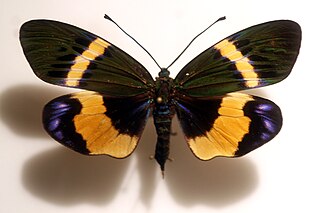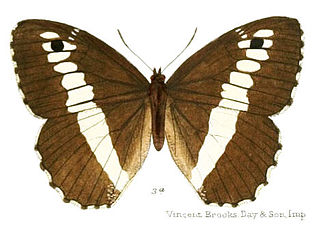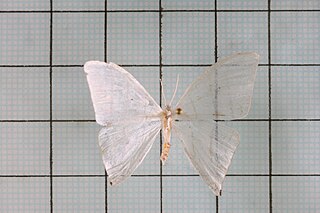
The Nymphalidae are the largest family of butterflies, with more than 6,000 species distributed throughout most of the world. Belonging to the superfamily Papilionoidea, they are usually medium-sized to large butterflies. Most species have a reduced pair of forelegs and many hold their colourful wings flat when resting. They are also called brush-footed butterflies or four-footed butterflies, because they are known to stand on only four legs while the other two are curled up; in some species, these forelegs have a brush-like set of hairs, which gives this family its other common name. Many species are brightly coloured and include popular species such as the emperors, monarch butterfly, admirals, tortoiseshells, and fritillaries. However, the under wings are, in contrast, often dull and in some species look remarkably like dead leaves, or are much paler, producing a cryptic effect that helps the butterflies blend into their surroundings.

The Satyrini is one of the tribes of the subfamily Satyrinae. It includes about 2200 species and is therefore the largest tribe in the subfamily which comprises 2500 species.

Chalcosiinae is a subfamily of the Zygaenidae, containing many species, mostly little known. Prominent sexual dimorphism, bright aposematic coloration and mimicry complexes are widespread.

Cigaritis is a genus of butterflies in the family Lycaenidae. Its species are found in the Afrotropical realm, the Indomalayan realm and adjacent regions of Asia.

Calinaga buddha, the freak, is a species of butterfly in the Calinaginae subfamily that is found in parts of Southeast Asia, China and India.

Rapala is a genus of butterflies in the tribe Deudorigini of the subfamily Theclinae of the family Lycaenidae. They are found throughout South Asia and Southeast Asia, with a few species extending to Australia and into the eastern Palaearctic region.

Aulocera is a genus in the subfamily Satyrinae of the brush-footed butterfly family, Nymphalidae. Commonly referred to as banded satyrs, species of the genus Aulocera are endemic to the Himalayas and associated mountain ranges.

Muschampia is a Palearctic genus of spread-winged skippers in the family Hesperiidae.

Ditrigona is a genus of moths belonging to the subfamily Drepaninae. The genus was erected by Frederic Moore in 1888.

Lopinga is a genus of butterflies of the family Nymphalidae.
Parargina is a subtribe of butterflies of the subfamily Satyrinae.

Loxerebia is a butterfly genus of the subfamily Satyrinae. The genus is confined to China, Mongolia, Burma, Thailand and Laos. Most species are endemic to China.

Calinaga aborica, the dark freak or Abor freak, is a species of butterfly in the Calinaginae subfamily that is found in India and the Abor Hills of northern Burma.

Calinaga lhatso is a butterfly found in the Palearctic that belongs to the browns family (Nymphalidae). The species was first described by Charles Oberthür in 1893. It is endemic to China.













